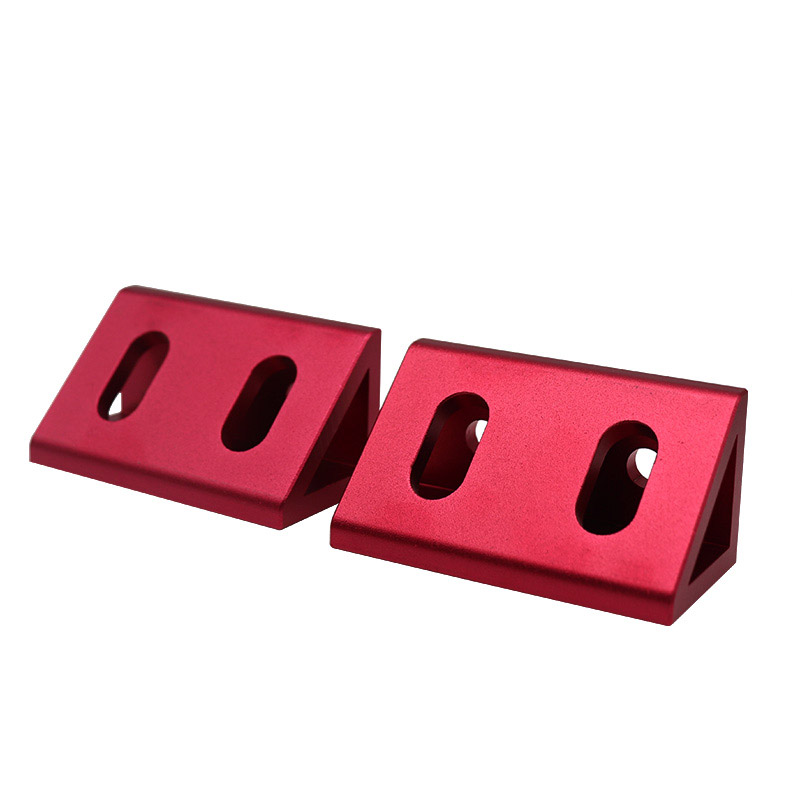
CNC machining is one of the most widely used manufacturing processes in the modern industrial landscape. It offers precision, repeatability, and the ability to create complex CNC machining parts with tight tolerances. However, designing for CNC machining requires a deep understanding of the process, machine limitations, and best practices to ensure manufacturability and cost-effectiveness.
This guide explores the key aspects of designing CNC machining parts, including process fundamentals, design constraints, guidelines, machine setups, and handling undercuts. By following these best practices, engineers and designers can optimize their parts for efficient and cost-effective production.
What is the CNC Machining Process?
CNC (Computer Numerical Control) machining is a subtractive manufacturing process where pre-programmed computer software controls the movement of cutting tools to shape a workpiece. The process is widely used for producing high-precision CNC machining parts across various industries, including aerospace, automotive, medical, and electronics.
Key Features of CNC Machining:
High Precision and Accuracy: CNC machines can achieve tolerances as tight as ±0.005 mm.
Wide Range of Materials: CNC machining is compatible with metals, plastics, and composites.
Scalability: Suitable for both prototypes and large-scale production.
Automation: Reduces human error and ensures repeatability.
Types of CNC Machines:
Different types of CNC machines serve different applications:
| CNC Machine Type | Description | Common Applications |
|---|
| CNC Milling | Uses rotating cutting tools to remove material | Complex 3D geometries, molds, precision components |
| CNC Turning (Lathe) | Rotates the workpiece while a stationary tool cuts | Cylindrical parts, shafts, bushings |
| CNC Drilling | Creates precise holes in the material | Aerospace components, automotive parts |
| 5-Axis CNC Machining | Allows movement in five directions simultaneously | Complex aerospace and medical parts |
What Are the Main Restrictions of CNC Design?
While CNC machining is highly versatile, there are certain design limitations that must be considered to ensure efficient manufacturing.
1. Tool Accessibility
CNC tools need sufficient access to remove material, which means that deep cavities, internal features, and complex undercuts can be challenging to machine.
2. Minimum Wall Thickness
Thin walls can cause vibration and deformation during machining. A recommended minimum wall thickness for metals is 0.5 mm, while for plastics, it should be 1.0 mm or more.
3. Internal Radii and Sharp Corners
Since CNC tools are round, sharp internal corners are difficult to achieve. Instead, designers should use a minimum internal radius of 1 mm to avoid excessive tool wear and machining time.
4. Undercuts
Standard CNC tools cannot easily machine undercuts. Special tools or additional setups may be required, increasing production time and costs.
5. Hole Depth-to-Diameter Ratio
Deep holes are difficult to machine accurately. The optimal depth-to-diameter ratio for drilled holes is 4:1, though deeper holes may require specialized processes like gun drilling.
6. Tolerances and Surface Finish
Tighter tolerances increase machining time and cost. Standard CNC tolerances range from ±0.1 mm to ±0.005 mm, depending on the process.
CNC Design Guidelines
To optimize CNC machining parts, designers should follow these best practices:
1. Optimize Material Selection
Choosing the right material affects machinability, cost, and performance.
| Material | Machinability | Cost | Common Applications |
|---|
| Aluminum (6061, 7075) | Excellent | Low | Aerospace, automotive, electronics |
| Stainless Steel (304, 316) | Moderate | Medium | Medical devices, marine parts |
| Titanium | Difficult | High | Aerospace, medical implants |
| ABS, PEEK, Nylon | Good | Low | Prototypes, lightweight components |
2. Use Standard Hole Sizes
Stick to standard drill bit sizes to reduce custom tool requirements.
3. Avoid Deep Cavities
Deep cavities require longer tools, increasing vibration and machining difficulty. If a deep cavity is necessary, consider breaking it into multiple parts for assembly.
4. Apply Chamfers and Fillets
5. Minimize Tool Changes and Setups
Reducing tool changes can significantly decrease machining time. Whenever possible, design parts that can be machined with a single tool setup.
CNC Machine Setups and Parts Orientation
Proper orientation of the workpiece can improve efficiency and reduce setup costs.
1. Single vs. Multiple Setups
Single-setup machining: Ideal for simple geometries, reducing handling time.
Multiple setups: Required for complex parts, but increases cost and time.
2. Clamping and Fixturing Considerations
3. Multi-Axis Machining Benefits
Using 5-axis CNC machining reduces the need for multiple setups and allows for complex geometries to be machined in a single step, improving precision and efficiency.
CNC Machining Undercuts
Undercuts are features that cannot be machined using standard end mills or drills.
1. Types of Undercuts
| Type | Description | Solution |
|---|
| T-Slot Undercuts | Features with overhanging sections | Use T-slot cutters |
| Dovetail Undercuts | Angled undercuts | Use dovetail cutters |
| Internal Undercuts | Features inside cavities | Use specialized tooling or EDM |
2. Alternative Methods for Undercuts
Wire EDM: Ideal for intricate internal undercuts.
Custom Tooling: Special tools can be created but add cost.
Part Reorientation: Sometimes, reorienting the part allows for standard tools to access the undercut.
Conclusion
Designing CNC machining parts requires careful consideration of process limitations, material selection, and best practices. By following CNC design guidelines, optimizing part orientation, and addressing undercuts effectively, engineers can create parts that are not only manufacturable but also cost-efficient.
As CNC machining technology continues to evolve, incorporating high-efficiency strategies like 5-axis machining, optimized toolpaths, and AI-driven design improvements can further enhance part quality and production speed.
FAQs
1. What is the ideal minimum wall thickness for CNC machining?
For metals, a minimum of 0.5 mm is recommended, while for plastics, at least 1.0 mm should be maintained.
2. How can I reduce CNC machining costs?
Use standard tool sizes and avoid deep cavities.
Minimize tight tolerances where unnecessary.
Opt for single-setup machining whenever possible.
3. What are the best materials for CNC machining?
Aluminum 6061 is the most common due to its machinability and low cost. Stainless steel, titanium, and engineering plastics are used for specialized applications.
4. How do I design for CNC undercuts?
Use T-slot or dovetail cutters, consider multi-axis machining, or choose alternative processes like EDM for complex undercuts.
5. What is the difference between 3-axis and 5-axis CNC machining?
3-axis CNC machining moves the tool in three directions (X, Y, Z).
5-axis CNC machining allows for movement in five directions, enabling the machining of complex geometries in a single setup.









